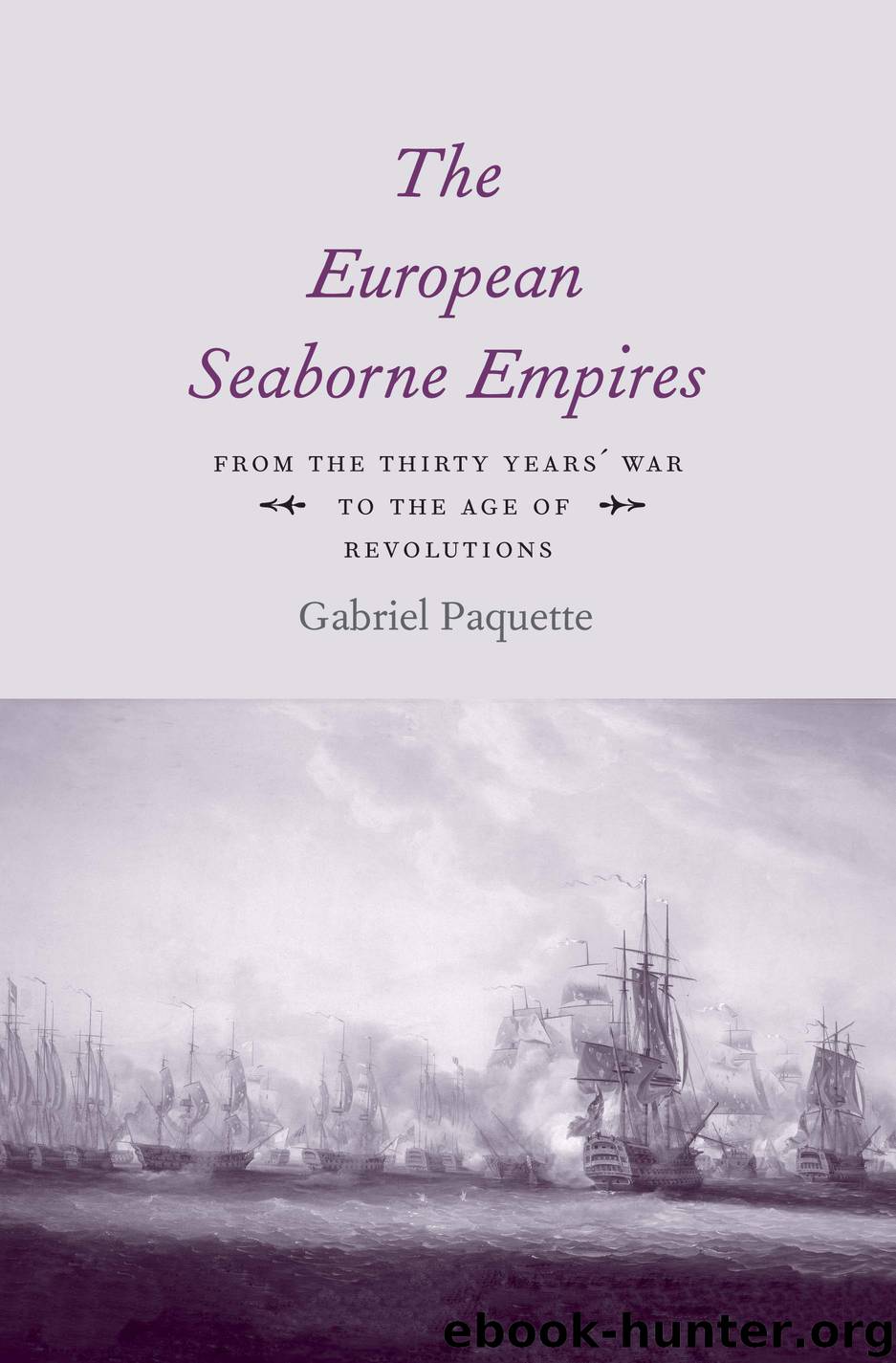The European Seaborne Empires by Gabriel Paquette;

Author:Gabriel Paquette;
Language: eng
Format: epub
ISBN: 9780300205152
Publisher: Yale University Press
10. Creole Societies, Mestizaje, and the Regulation of Hybridity
Whether through violence, accommodation, or uneasy coexistence, Europe’s seaborne empires rapidly became mestizo societies. They gave rise to a variety of new cultural forms, often fusions of cultures that had never before come into contact with one another. Heterogeneity emerged from the mixing and melding pell-mell of diverse peoples of varied geographical and cultural provenance. From this chaotic milieu emerged new phenotypes and identities, which resembled and drew upon the original, precontact models while metamorphosing in unprecedented ways. The forging of colonial societies did not involve the mere replication and imposition of European models overseas. Hybridity went beyond exchanges of genetic material, diet, and customs, extending to the domain of religion, where syncretic practices often resulted from the collision of belief systems, chiefly through conversion efforts. Also contributing to the divergence of colonial societies from their original models, and from each other, were differences of terrain, climate, disease, and a host of other ecological and epidemiological factors, many of which were unknown in Europe and to which European colonists were compelled to adapt. In this chapter, social and cultural hybridity, and the regulation of these new forms forged in the crucible of empire, are examined and analyzed.
One of the most visible and enduring signs of hybridity is language. Empires summoned new languages into existence. Various African and European vocabularies and grammatical structures were merged, for example, in the creation of Papamiento, the language of the Dutch Caribbean colonies of Curação, Aruba, and Bonaire, and in the Kriolu of Cape Verde. There were at least twenty-five creole languages in the British Empire. In and around the Indian Ocean, one of the lingua francas employed Portuguese grammar with a lexicon that was a hybrid of Portuguese, Malay, Tamil, and Arabic. In the interior of Brazil, a língua geral evolved that combined elements of Tupí and Portuguese, which was for a time the most widely spoken language. Just as important, colonial societies were also polyglot societies, and this reality was reflected in the introduction into European languages of non-European loan words that have persisted long after the eclipse of formal empire. For instance, the word “shampoo,” derived from a Hindi word for massage, entered the English language in the early nineteenth century. The plantation complex in the Americas proved conducive to linguistic borrowing. A range of African botanical and culinary words entered the English language in colonial Virginia, whether “banana” or “yam,” derived from Mandinka and Wolof, or “goober,” a term for peanut, taken from the Western Bantu language.1 Not only were new languages created, new identities were conjured as well. Old World identities were not always retained and reproduced after crossing the Atlantic. The more than one hundred thousand German-speaking people from the Rhineland became “German,” while the mixed, multilingual society of New Netherland became “Dutch.”
Imperial authorities often sought to keep individuals of different geographical provenance, “race,” or “ethnicity” separated from one another. This effort took several forms. The most sustained segregation initiative was
Download
This site does not store any files on its server. We only index and link to content provided by other sites. Please contact the content providers to delete copyright contents if any and email us, we'll remove relevant links or contents immediately.
| Africa | Americas |
| Arctic & Antarctica | Asia |
| Australia & Oceania | Europe |
| Middle East | Russia |
| United States | World |
| Ancient Civilizations | Military |
| Historical Study & Educational Resources |
Cecilia; Or, Memoirs of an Heiress — Volume 1 by Fanny Burney(32078)
Cecilia; Or, Memoirs of an Heiress — Volume 3 by Fanny Burney(31470)
Cecilia; Or, Memoirs of an Heiress — Volume 2 by Fanny Burney(31420)
The Secret History by Donna Tartt(18224)
Sapiens: A Brief History of Humankind by Yuval Noah Harari(13999)
Leonardo da Vinci by Walter Isaacson(12815)
The Radium Girls by Kate Moore(11639)
Sapiens by Yuval Noah Harari(5128)
How Democracies Die by Steven Levitsky & Daniel Ziblatt(4970)
The Wind in My Hair by Masih Alinejad(4852)
Homo Deus: A Brief History of Tomorrow by Yuval Noah Harari(4694)
Endurance: Shackleton's Incredible Voyage by Alfred Lansing(4518)
Man's Search for Meaning by Viktor Frankl(4299)
The Silk Roads by Peter Frankopan(4277)
Millionaire: The Philanderer, Gambler, and Duelist Who Invented Modern Finance by Janet Gleeson(4116)
The Rape of Nanking by Iris Chang(4025)
Hitler in Los Angeles by Steven J. Ross(3803)
Joan of Arc by Mary Gordon(3797)
The Motorcycle Diaries by Ernesto Che Guevara(3795)
